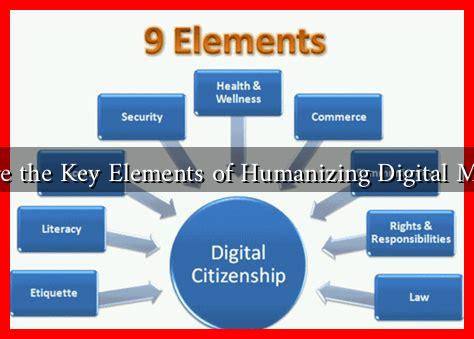-
Table of Contents
What Are the Key Elements of Humanizing Digital Messages?
In an increasingly digital world, the way we communicate has evolved dramatically. Businesses and individuals alike are leveraging digital platforms to connect with audiences. However, as technology advances, the challenge of maintaining a human touch in digital messages becomes more pronounced. Humanizing digital messages is essential for fostering genuine connections, enhancing engagement, and building trust. This article explores the key elements that contribute to humanizing digital communication.
Understanding the Importance of Humanization
Humanizing digital messages is not just a trend; it is a necessity. According to a study by HubSpot, 70% of consumers prefer to connect with brands that have a human touch. This preference highlights the importance of authenticity and relatability in communication. When messages resonate on a personal level, they are more likely to engage the audience and foster loyalty.
Key Elements of Humanizing Digital Messages
To effectively humanize digital messages, several key elements should be considered:
- Authenticity: Authenticity is the cornerstone of humanized communication. Brands should strive to be genuine in their messaging, reflecting their true values and mission. For instance, Patagonia, an outdoor clothing brand, is known for its commitment to environmental sustainability. Their messaging often includes stories about their initiatives, which resonate with their audience.
- Empathy: Understanding the audience’s feelings and perspectives is crucial. Empathetic messaging can create a sense of connection. For example, during the COVID-19 pandemic, many brands shifted their messaging to acknowledge the challenges faced by consumers, offering support and understanding rather than just promoting products.
- Storytelling: Humans are naturally drawn to stories. Incorporating storytelling into digital messages can make them more relatable and engaging. For instance, Airbnb often shares stories from hosts and guests, showcasing unique experiences that highlight the human aspect of travel.
- Personalization: Tailoring messages to individual preferences can significantly enhance engagement. Personalized emails, for example, have been shown to increase click-through rates by 14% and conversion rates by 10% (source: Mailchimp). Utilizing data to understand customer behavior allows brands to create more relevant content.
- Visual Elements: Incorporating visuals such as images, videos, and infographics can enhance the emotional impact of digital messages. Visual storytelling can convey complex ideas quickly and effectively, making the content more digestible and engaging.
- Conversational Tone: Adopting a conversational tone in digital messages can make communication feel more personal. Using informal language, asking questions, and encouraging dialogue can create a sense of community and connection.
Case Studies: Successful Humanization in Action
Several brands have successfully humanized their digital messages, setting examples for others to follow:
- Coca-Cola: The “Share a Coke” campaign personalized bottles with popular names, encouraging consumers to find bottles with their names or those of friends. This simple yet effective strategy created a personal connection and drove sales.
- Slack: The workplace communication platform uses a friendly and approachable tone in its messaging. Their blog features stories from users about how they use Slack to improve collaboration, making the brand feel more relatable.
- Warby Parker: The eyewear company uses storytelling to share customer experiences and the impact of their “Buy a Pair, Give a Pair” program. This not only humanizes their brand but also highlights their commitment to social responsibility.
Conclusion: The Future of Digital Communication
As digital communication continues to evolve, the importance of humanizing messages will only grow. By focusing on authenticity, empathy, storytelling, personalization, visual elements, and a conversational tone, brands can create meaningful connections with their audiences. The examples of successful brands demonstrate that humanized messaging not only enhances engagement but also fosters loyalty and trust. In a world where consumers are bombarded with information, the ability to connect on a human level will set brands apart and pave the way for future success.

